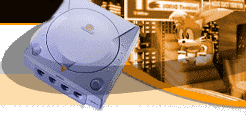| |
Sega Classics: Wonder Boy 3
Wonder Boy 3 for Sega Master System! - by Prophet

|
Way back when the Sega Master System was still going toe-to-toe with the Nintendo Entertainment System, Sega found themselves in a precarious predicament. They faced a formidable rival that seemed to have a lock on all the decent developers and game properties on the market (you can site Nintendo�s draconian licensing policies as one reason for that). So what does the number two console developer do? They created their own top-notch content. And although they didn�t create franchises with the power and strength of Mario, they did manage to create a number of game properties that captured the attention of gamers world-wide. One of the most memorable games for me on the SMS (besides the fabled and much loved Phantasy Star) was a game called Wonderboy 3. Wonderboy 3 was a genre blending game that offered arcade style play, heavy roleplaying elements, a password save feature (one of the earliest games to use that feature), and several different characters to play. W3 was truly a unique and addictive experience back then - and even by today�s standards an excellent game concept. The only other game smart enough to capture that kind of gameplay back then was Megaman for the NES.
Wonderboy 3 is all about a boy who defeats a mighty Dragon. But the price of victory is very steep for our hero: While escaping the Dragon�s castle, Wonderboy is bestowed with a curse that turns him into a dragon boy. The goal of the game is to lift the curse and conquer the evil dragon again. What is so innovative about the game is that it lets you use a variety of weapons & armor, along with the ability to transform Wonderboy into six different personas (mouse, lion, bird, fish, dragon & human boy). Each �personality� has a special ability: Mouseboy can stick on certain surfaces & fit into tight areas, Birdboy can fly, Fishboy can swim, Dragonboy can breath fire, Wonder Boy can be his handsome self (he�s not so special) and Lionboy can strike objects overhead (breakable blocks) & and is much tougher than the rest.
Much like Zelda for the NES, players must seek out hearts to increase their lives, kill monsters for money & power-ups and eventually make it to the end of each area to defeat the �big bosses�. Once you�ve done that you get access to a special platform that can transform you into the personas you have unlocked (by beating various �themed� areas).
W3 was easy to get the hang of. It used the standard platformer convention: A dozen or so powerups you could pick up from monsters, cold hard cash (for buying health, weapons and armor), jumping, flying, swimming, walking on certain walls (with your little mouse friend), and the big gnarly boss at the end of each level. The game was sort of non-linear (you had to play a bit of "find the key� to advance, but that was the only true prerequisite.), but divided by choosing the best character to access certain areas. For example, taking the birdboy into the water was not the best choice, so you hit the platform and change him into fishboy.. The other thing W3 had was a lot of secret areas chocked full of treasures that were only accessible by using certain characters. A lot of the best armor and weapons could be found in these areas on pig-faced vendors (yeah, all the vendors are pigs for some reason).
Finally the most interesting and entertaining aspect of the game was its Japanese style graphics. While the game was obviously about killing things, it was done in the usual non-violent platform fashion (after all, the game was geared towards kids). NPC characters (mostly vendors) consisted of cute little girls in nurse uniforms and pig vendors that smoked cigarettes (what secret message lies in that visual, I don�t know).
And where is the Wonder Boy now? Sadly, Sega let this series (like so many others) fall by the wayside. If I had a nickel for every decent franchise abandoned by Sega, I�d be able to afford a copy of Phantasy Star IV from Ebay. Such is life, I guess. But some games just need a resurrection from the grave, and the Wonderboy series is one that stands out as a second choice, right behind the original Phantasy Star.
Screenshot Gallery
Essential Links:
ClassicGaming.com
|

